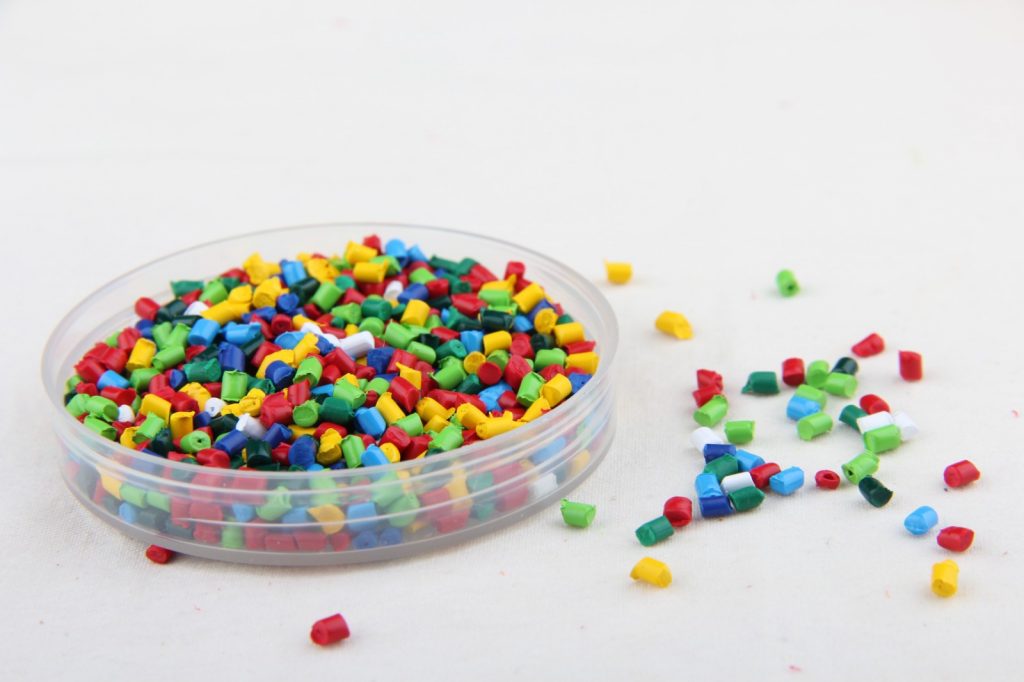Masterbatch is extensively utilized in the manufacturing industry, particularly in the production of plastic textiles and packaging materials. By the end, you’ll have a clear understanding of masterbatch and its significance in the manufacturing industry.
Masterbatch introduction
A special substance, known as masterbatch, actively incorporated into plastic and polymer materials during the manufacturing process, serves to impart vibrant colors and enhance their quality. Masterbatch acts as an additive, improving various aspects of the final product.
It comes in the form of concentrated mixtures containing pigments, additives, and carriers. The main purpose of masterbatch is to ensure consistent color and enhance the overall performance of the final products.
How masterbatch made ??
The production process of this product involves selecting and combining three main components: pigments, additives, and carriers. Pigments determine the color, additives provide additional properties like UV resistance or flame retardancy, and carriers help distribute the pigments and additives evenly in the plastic material.
To create this product, manufacturers actively blend the components using specialized equipment. Subsequently, the resulting mixture undergoes a transformation into small beads or granules. This process facilitates ease of handling and seamless incorporation into the manufacturing process.
Advantages of Masterbatch
Product offers several advantages that make it valuable for manufacturers:
- Consistent Color: It ensures that the color of plastic products remains consistent throughout the manufacturing process, resulting in visually appealing and uniform products.
- Cost Efficiency: Using it eliminates the need for expensive on-site color mixing equipment, reducing costs and improving production efficiency.
- Improved Performance: Additive masterbatch enhances the mechanical, thermal, and chemical properties of plastic materials, making them more durable and versatile.
- Versatility: Masterbatch actively demonstrates compatibility with a diverse range of polymers, enabling its utilization in various manufacturing processes and applications.
- Customization: Manufacturers can customize masterbatch formulations to meet specific color requirements and incorporate desired functional properties.
also have many other advantages
Applications of Masterbatch
Masterbatch finds applications in various industries, including:
- Packaging: Masterbatch plays a vital role in the manufacturing industry, particularly in enhancing the appearance and functionality of plastic packaging materials. It effectively adds vibrant colors and provides essential protection, resulting in appealing and practical packaging solutions.
- Automotive: Masterbatch finds application in the automotive industry, where it is utilized to produce components with customized colors and enhanced performance. These components include interior trims and exterior parts, contributing to both the aesthetic appeal and functional qualities of the vehicles.
- Construction: It plays a crucial role in producing plastic pipes, cables, and roofing materials for the construction sector.
- Consumer Goods: Masterbatch enhances the visual appeal and functionality of consumer products, including toys, household appliances, and electronics.
- Textiles: In the textiles industry, masterbatch is used to dye synthetic fibers and achieve consistent colors in fabrics and textiles.
Masterbatch and Sustainability
contributes to sustainability efforts in the following ways:
Waste Reduction: By using masterbatch, manufacturers can decrease waste resulting from color changeovers and conventional color mixing methods. Additionally, it helps minimize material waste.
Energy Efficiency: The production process of masterbatch requires less energy compared to in-house color mixing processes. This leads to reduced energy consumption and contributes to energy efficiency.
Recycling Compatibility: Masterbatch easily integrates with different recycling processes, allowing manufacturers to include recycled materials while maintaining color consistency and performance. Consequently, it supports recycling initiatives and encourages sustainable practices. In essence, masterbatch facilitates the use of recycled materials without compromising quality or appearance.

